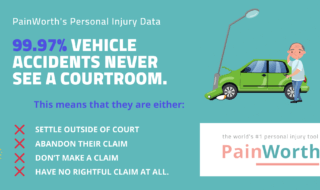You can’t throw a stone on the internet without it hitting a think-piece about how digital products and smartphones decrease our engagement with other humans. (Do us a favor—throw it hard.)
Digital health takes that conversation in an interesting direction. Many thought leaders romanticize the relationship between the patient and the doctor as the most personal relationship a person has outside of their spouse.
They have a point. After all, this is your body and your health we’re talking about. It does feel as if that relationship gets depersonalized when it’s relocated into a chat box on a phone screen!
However, in many ways, the opposite is true. Yes, the doctor/patient bond can be significant–and it’s a relationship that gets replenished by one, maybe two visits a year, unless it’s a very bad year for health problems.
The truth is—yes, it’s possible for chatbots and AI to depersonalize the doctor/patient relationship. But digital health can also be a powerful tool to enhance the human connection between doctors and their patients.
Like most digital businesses, proper use of digital health goes hand-in-hand with user engagement—or, to take it from the tech world to the medical world, patient engagement. Digital processes aren’t there to push patients farther away from their providers—they’re tools to bring patients and providers closer together.
Patient engagement means that patients actively seek out interactions related to their health care, rather than being passive recipients of medical treatment or advice, and are following a five step engagement process similar to the customer journeys of other digital products:
- Awareness
- Consideration
- Purchase
- Retention
- Advocacy
And as Orthogonal points out, engagement is actually a two-way street between patients and providers.
- Patient engagement, the topic at hand. Patients have to buy into the digital solution proposed, to see it as a useful tool in their healthcare experience.
- Provider engagement. This can be an even bigger hurdle, but providers, many of them set in their ways, need to buy into the solution as well, seeing it as a powerful tool to advance their practice and brand mission. They have to actually use the tools, not look for a workaround back to their comfort zone.
Here are some reasons why encouraging user engagement—that is, patient engagement—makes all the difference in a digital health future that makes patients healthier, in control of their treatment, and more connected with their doctors and healthcare providers.
Lower Costs
The promise of digital health, like the promise of digital everything, revolves around various key cost-saving mechanisms, including but not limited to:
- Automation
- Cloud-based centralization
- Data analysis
- Machine learning
The cost-saving benefits of these advances don’t kick in if patients don’t adopt and adapt to the technology en masse. Costly systems must remain in place without a systematic plan to migrate all patients over to digital health platforms. For example, low patient adoption of telehealth is a key obstacle to its widespread implementation.
Some cost-savers, like proposed Electronic Medical Record and Electronic Health Record (EMR/EHR) databases don’t work without widespread adoption across brands and providers. One provider buying in isn’t enough—EMR/EHR doesn’t work unless everyone pulls in the same direction.
Widespread outreach and marketing is required to achieve the critical mass of patient engagement so that older, clunkier, and more costly systems can be put to bed to make way for a digital future.
More Data
Widespread patient engagement in digital health products promises to flood the medical world with data. More data than they know what to do with. Centralized health databases like EMR/EHR are database solutions meant to meet a trend in public-health awareness focused around consumers’ greater feeling of ownership over their own healthcare process.
https://www.youtube.com/watch?v=lP4dKILPGp8
Wearable devices and SaMD are digital health solutions that form an Internet of Medical Things (IoMT), feeding data into cloud-based digital data repositories—not data collected at clinical or doctor visits, but data gathered between doctor visits. A minute-by-minute accounting of heart rates, motor stability, sleep breathing patterns, steps taken, blood sugar, blood pressure, pictures of moles, and just about anything that can be measured.
In the past, having “more data than you know what to do with” represented a significant problem. This is where wearable medical technology dovetails nicely with AI machine learning, which can examine large quantities of digital and image data in search of patterns. This is how doctors are learning to discover tumors and other conditions early—from digital analysis of subtle trends in vast datasets.
This revolution in diagnostics has the potential to make us all healthier and alleviate the financial strain on the system by billions of dollars, provided patients are engaged enough to feed the data beast.
More Satisfied Patients
Patient engagement with digital health apps connected to their favorite doctors and healthcare providers results in a greater feeling of agency in their own healthcare, leading to enhanced treatment adherence and better outcomes.
The efficiencies created by digital healthcare products offer patients more effective lines of communication with healthcare providers, leading to more patient satisfaction and—as a result—more brand loyalty for the tool designers and the providers who have the vision to adopt the best tools.
Healthier Populations
In addition to fostering happier consumers of healthcare services, healthier patients on a micro level lead to healthier societies on a macro level, with fewer people passing diseases or acting as role models for unhealthy habits.
Centralized digital healthcare products like EMR/EHR help doctors track trends in the spread of diseases, identifying hotspots for potential pandemics and tracking macro-trends in consumer health, enabling them to identify diseases sooner, enable rapid diagnostics, and suggest treatment plans based on analysis of huge datasets.
Ultimately, the point of digital health is to bring patients closer to their doctors, not farther apart. Maybe healthcare isn’t the last adopter of the power of the internet and digital products to bridge historic gaps, but its time has definitely come. As streamlined digital health solutions become the norm in the public consciousness, providers who maintain the barriers of ages past will look more and more like dinosaurs.
As consumers become aware of the powerful digital processes streamlining their access to healthcare, patient engagement, hand-in-hand with provider engagement, will be the key drivers in the process of digital health adoption.



